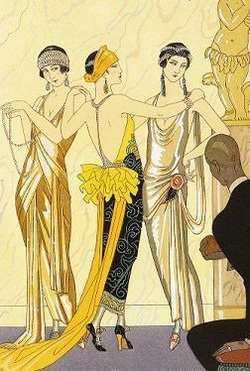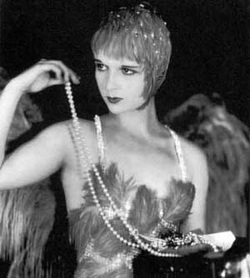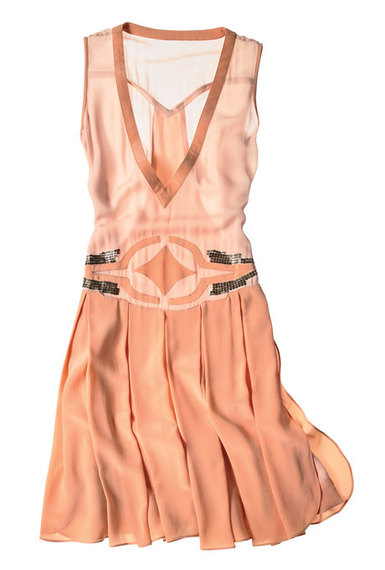 Scenes From The Movie, The Great Gatsby The Great Gatsby will open in theaters on May 10th. The film is a modern adaptation from the popular F. Scott Fitzgerald novel. The story depicts the glamorous glitz of the wealthy in a fictional town who lives are filled with disenchantment and despair. It is a beautifully tragic story made more heart-wrenching due to the magnificent setting and elegant attire in which, for the most part, we find our protagonists. A beautiful and facile setting teeming with disillusionment, selfishness, and deceit. It is both a modern day Romeo and Juliet and a cautionary tale of moral decay and its effects on the modern woman of the time popularly known as, The Flapper. "I felt a haunting loneliness sometimes, and felt it in others--young clerks in the dusk, wasting the most poignant moments of night and life."  The Modern Woman, 1920s So who exactly was this modern day temptress, modern society's Desdemona? These young women who during WWI had, many for the first time, entered the workforce outside of the home and discovered not only that they could have earning power, but political and social freedoms were also theirs for the taking. The traditional societal rules and mores know longer could hold sway for these women who were now faced, due to the heavy casualty toll taken during the war, with having to continue working outside the home as well as the imminent possibility of spinsterhood. The expectations of staying home to care for the household and be taken care of by their husbands know longer applied for these young women. After WWI, not only had the world changed, but also, for the first time in history, gender rules were turned upside down. The old set of values no longer did apply. These young women and young men, many of which were war survivors, were now going to play hard and enjoy life to the fullest. “(…) the New Woman of the 1920s boldly asserted her right to dance, drink, smoke, and date—to work her own property, to live free of the strictures that governed her mother’s generation. (…) She flouted Victorian-era conventions and scandalized her parents. In many ways, she controlled her own destiny.”  Art Deco Fashions-1920s The term, Flapper, first appeared in Great Britain and was coined as a derogatory term to describe a young woman out of the nest "flapping" her wings, yet still not having learned to fly. American authors, like F. Scott Fitzgerald and John Held Jr., brought the term, Flapper, to the United States. Instead of a floundering and lost girl, Fitzgerald reinvented the ideal flapper to be "lovely, expensive, and about nineteen." Of course, when we consider the Flapper image today, we imagine wild, independent women who mocked the values of traditional society by cutting their hair to a short bob-length, raising their skirts to reveal long, slender legs, wearing heavy make-up, dancing the Charleston, staying out late to enjoy Prohibition gin in seedy, smoky speakeasies, and freely enjoying the attention of many male suitors. Instead of listening to the advice of their mothers, these women were not afraid to think for themselves and make their own decisions (good or bad).  Louise Brooks, popular 1920s film star Coco Chanel is credited as the designer who popularized the Flapper look which was characterized by a slim, boyish silhouette, called garconne (little boy). Gone were the tight, constricting corsets, heavy skirts, and pantaloons, of prior fashion periods, instead women would tightly wrap bandages around their chest in order to appear more slim and boyish. Dresses were typically worn to emphasize the arms with most dresses sleeveless. Bare arms allowed women to show off their tans and gave the appearance of women who were fit, healthy, active, and sporty. The waistline for a Flapper's dress was a dropped waistline, typically falling at the hips. Dresses were loose and comfortable with short, full skirts which easily flipped and twirled during movement so one could catch a glimpse of rouged knee, whether a young woman was swishing and swaying along a busy city street or shimmying and shagging to the latest jazz craze of the period. Silk or rayon stockings were worn with garters rolled over the coveted, rouged knees. Flappers would often complete their outfit with a short brimmed, bell-shaped, closely fitted cloche hat worn over their short, boyishly cut hair. The entire look of the Flapper was designed to emulate an easy, breezy woman in love with life and enjoying every carefree minute of it.  Carrie Mulligan as Daisy Buchanan, The Great Gatsby The 1920s was not only a gay time filled with parties, but also a very prosperous economic time with a new breed of self-made, nouveau riche milionaires who wanted to flaunt their newly found wealth. The men would purchase extravagant mansions and cars while the women lavished themselves with expensive jewelry and furs. Parties provided a perfect opportunity to display and flaunt all the beautiful things the newly rich were now able to afford. Everyone wanted to glitter and shine like the popular movie stars on the silver screens. Sequins, lame, furs, exotic feathers, pearls, and art deco influenced costume jewelry were the standards for evening wear. In addition to art deco, the discovery of King Tut's tomb in 1922 led to Egyptian influences in dress and popular culture, such as the wearing of heavy kohl eyeliner, the color 'nile' green, and jewelry in gold and lapis lazuli. The ancient Egyptian culture, like the 1920s, was known for its opulence and decadent display of wealth and luxury. During the 1920s, the nouveau riche lived a lifestyle that celebrated their newly hard-earned money and the women wanted to show their riches off to the world, sparkling and glittering in gold lame, expensive cars, covered in rhinestone jewelry and heavy make-up. These women, with their swaying, fringed dresses, were the early bloom of the modern woman. Although oftentimes misguided, many sought to break away from restricting societal beliefs about women and wanted not only to flap their wings, but to soar above the limitations of life and take flight, like Icarus, fearlessly and gracefully following the never-ending, luminescent glow of the sun towards a new age. An age that would deliver on its promise to have the freedom to choose...who to love and how to live, .  Le garconne, Louise Brooks Please feel free to share your thoughts and comments. Fashion Freelance Works! Find out how I can work for you by submitting your contact information on this website.
2 Comments
|
Shop VintageVagabond NYC Contact Fashion SpeaksThank you, your message has been sent
Archives
May 2013
|













 RSS Feed
RSS Feed
